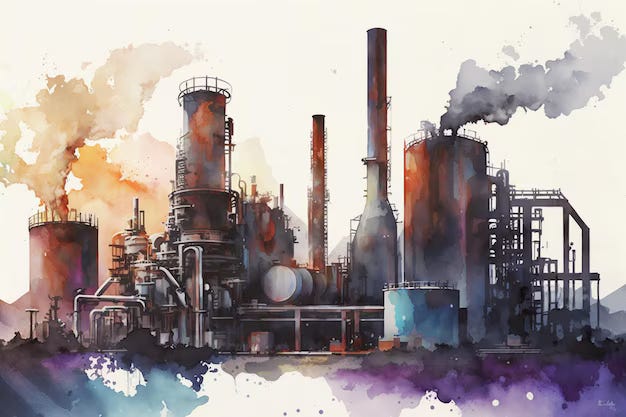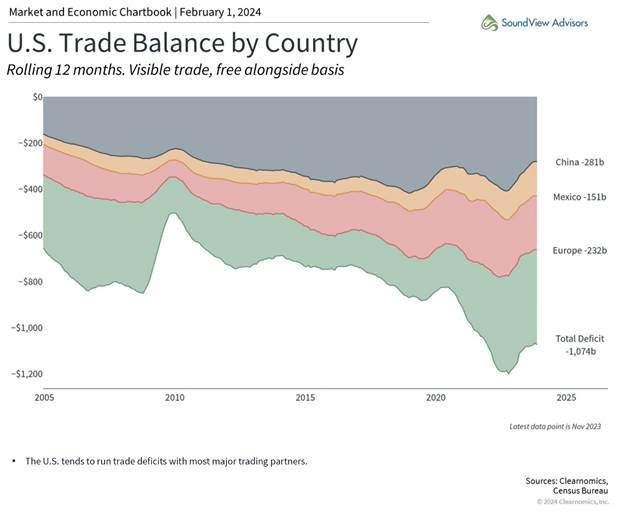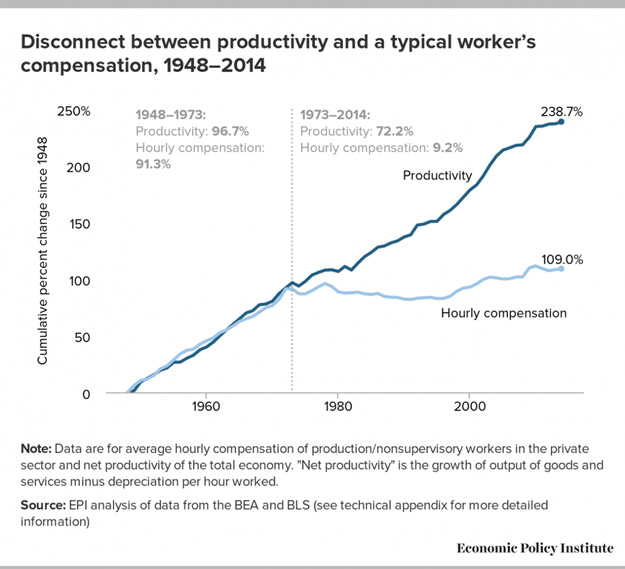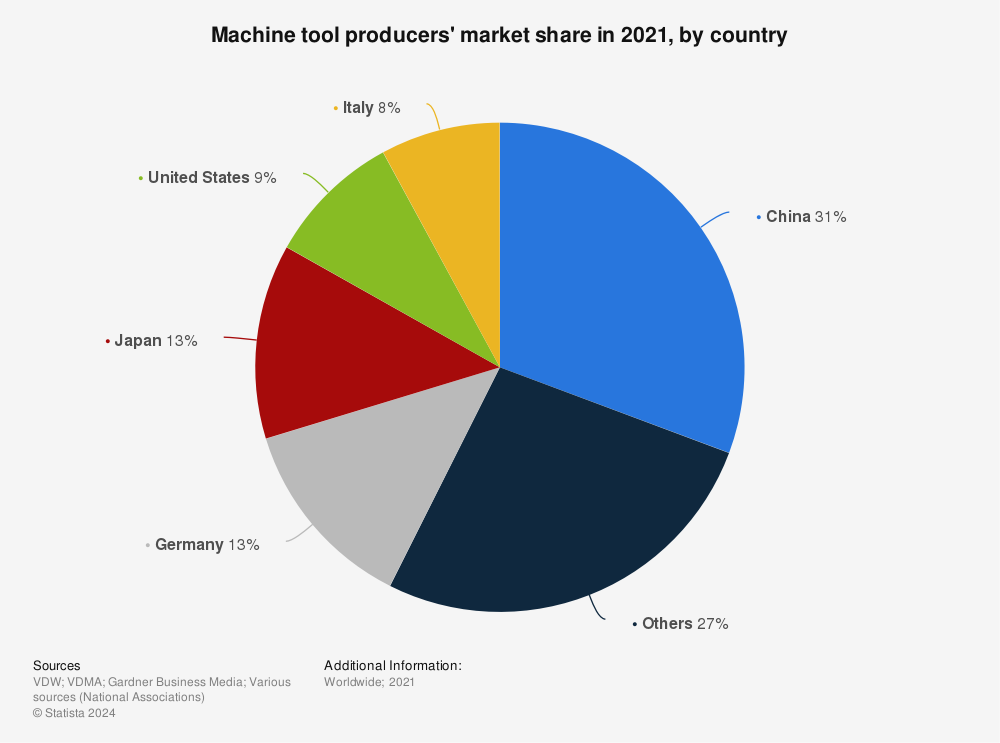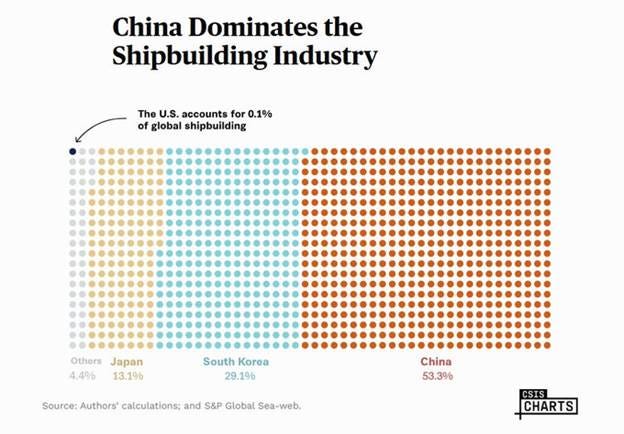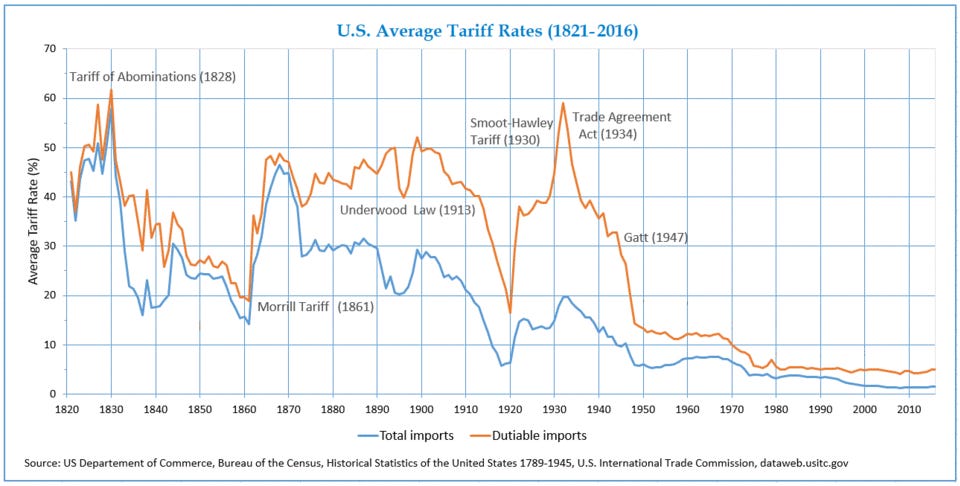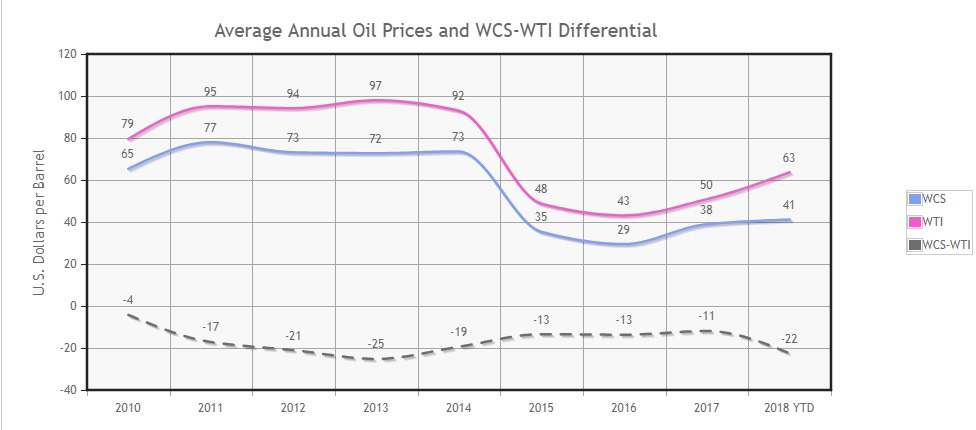America Must Reindustrialize—Tariffs are an Existential Necessity
American Industry Needs Assurances of High & Stable Tariffs
Originally published on Blaze, but I have made some expansions in this version.
On April 2, 2025, President Trump announced reciprocal tariffs that would liberate America from China by reshoring American industry so that America is economically self-sufficient. After all, how can America defend her independence when she relies on Chinese ships, machinery, and computers?
Tariffs are not just an economic issue—they are an existential necessity.
Unfortunately, President Trump only has four years to reshore America’s industry—to prove that tariffs work. This will be tough, but not impossible. Many countries, from South Korea to Japan—to America herself—have done it before. We can do it again. Here’s how.
American Industry is Being Slaughtered on the Altar of Globalism
To begin with, why does America need tariffs?
Tariffs are not—and never were—just about economics. Tariffs are about making America self-sufficient. Why? Because political independence is impossible without economic independence. America’s Founding Fathers learned this lesson the hard way: no industry, no nation.
Remember, the greatest threat to the American Revolution was not the British soldiers, but her factories. Why? The Colonies depended on British imports for everything from textiles to weapons. It was not until the French started supplying war materiel—including over 80,000 firearms—that the Revolution had a fighting chance.
After the Revolution, George Washington wrote:
A free people ought not only to be armed, but . . . their safety and interest require that they should promote such manufactories as tend to render them independent of others for essential, particularly military, supplies . . .
Washington’s first major piece of legislation was the Tariff Act of 1789. Two years later, Alexander Hamilton published his Report on Manufactures which provided the U.S. with a blueprint for industrial development: the “American System”. For Hamilton, tariffs were not simply a tax, they were the key to unlocking America’s industrial potential.
America followed Hamilton’s wisdom for nearly two centuries, prospering and industrializing under high tariffs. In fact, America had the highest average tariff rate in the Nineteenth Century. By 1870 America produced one-quarter of the world’s manufactured goods, and half by 1945. America was the world’s factory.
In the 1970s America began its failed experiment with economic globalism. The result?
America has run global trade deficits every year since 1974. The cumulative value of these deficits is ~$28.1 trillion in today’s dollars. Americans have also invested $6.68 trillion abroad, building factories, laboratories and infrastructure in foreign countries. To add insult to injury, foreigners have stolen almost $10 trillion worth of American intellectual property and technology.
This has been catastrophic for America’s industrial base. To begin with, over 60,000 factories have been relocated to China, Mexico, and Europe. This caused job loss on an unprecedented scale—America has lost over 5 million good-paying manufacturing jobs since the 1980s.
Large-scale unemployment has obviously had downstream effects on wages. The grim reality is that the ability to offshore factories shifted bargaining power away from workers to employers. This uncoupled the historic link between productivity and wages—in the past, more productive workers were compensated accordingly. Now, workers take what they can get. If not, the job goes to China. American wages have been gutted by this “race to the bottom”.
Offshoring has undermined American industry, leaving the Nation beholden to foreign suppliers.
Consider that America no longer manufactures enough of the of basic machinery required to manufacture basic household items like knives and forks—never mind the sophisticated electrical components needed for computers and smartphones. In other words, even if we wanted to manufacture forks, we would probably need to buy the fork-making machinery from China.
This is made clear when we look at America’s production of machine tools. A machine tool is a piece of machinery that shapes its output by removing material by way of lathing, planning, drilling, milling, grinding, sawing, or pressing the output. Machine tools transform raw materials into something useful. They are the tools that make tools.
America used to be the leading manufacturer and global exporter of machine tools. Today, America imports of most its machine tools, and only produces 7% of the world’s machine tools. For comparison, Italy produces 8%, while China makes 29%.
The state of high technology is even more distressing.
America imported $763 billion worth of advanced technology products in 2024, including a sizeable deficit in silicon computer chips. The modern world runs on computers. They are in everything from our most advanced aircraft to humble toasters. America would shut down without computers—without imports.
Not only does America rely on foreign chips, America does not manufacture the photolithography machines required to print the chips. Those come from the Netherlands, are shipped to Taiwan, who sells the finished product to the U.S. The whole supply chain is offshored, leaving America profoundly vulnerable.
This is the case for just about any critical product: America depends on imported steel, ball bearings, automobiles, and oceangoing ships. Embarrassingly, China builds orders of magnitude more oceangoing ships than America. How can America claim to be a global power after China rules the waves?
What if China were to stop shipping silicon chips to America? What about something as simple as shoes? Light bulbs? No foreign power should have this kind of leverage over the American people. And while they have this power, is America truly free? No—no more than a suckling infant is free from his mother.
Dependence breeds servitude. Free trade will make America a nation of slaves.
How Tariffs Can Make America Self-Sufficient Again
President Trump only has four years to prove to the American People that reindustrialization is possible. Imposing “reciprocal” tariffs undermines this goal. Pausing the tariffs for 90 days to haggle with foreign leaders undermines this goal. Shocking the stock market undermines this goal. If President Trump is going to be successful, this is what he needs to do.
First, America needs high and stable tariffs.
These tariffs need to be high enough to make reshoring economical—if it is cheaper to build factories in China or Vietnam and simply pay the tariff, then the tariff will do nothing other than raise revenue. What is the optimal rate?
Time will tell—but unfortunately time is not on the President’s side. As such, I would recommend imposing immediate “overkill” tariffs of 100% from day one to make sure the job gets done.
Although this sounds high, we need to remember that America’s tariff rate under the American System was over 30%—in an age before the advent of forklifts and container ships. It would need to be higher now to achieve the same result. Also, remember that these were average rates. Tariff rates on manufactured goods were much higher than those on raw materials, so the effective tariff rate on the sorts of products that we currently want to reshore was much higher.
More recently, South Korea industrialized with average protective tariffs of roughly 40%—and they had the advantages of a weak currency and cheap labor. Japan also raised similar tariffs when it was reindustrializing after World War II, and likewise enjoyed cheap labor & cheap currency.
This is not the case for America today—American labor is expensive and we have the global reserve currency. Tariffs needs to make up the difference in order to normalize the economic asymmetries.
Next, the tariffs also need to be stable. Companies are not going to invest trillions in America if the President flip-flops the rates every two weeks. They will simply try and ride out the storm—probably with the help of foreign governments who are keen to maintain their toeholds in America’s market. President Trump needs to pick a flat tariff and stick to it.
Second, tariffs need to serve the purpose of reindustrialization. If they frustrate this purpose, then there is no point to imposing tariffs. For example, industry benefits from access to cheap raw materials. Accordingly, there should be zero tariffs on raw materials like rare earth minerals, iron, or oil. America can only benefit from cheap fuel.
Also, there is no point in imposing tariffs on exotic products, that is, products that America cannot grow or mine. For example, America cannot grow coffee beans or bananas. As such, what is the point in putting tariffs on these sorts of products? This is a revenue scam.
Third, tariffs are going to generate revenue—people will always buy imports. These revenues should be used to reindustrialize America. For example, tariff revenue could be used to offset tax cuts to American industry. The revenue could also be used to used to finance low-interest loans for large industrial projects, which are capital intensive.
Or perhaps a more innovative solution would be to use the funds to contribute towards the down payments for large-scale industrial developments. This would solve the problem of American businesses coming up with capital for these large projects. These down payments would be secured against the land—to be repaid with interest when the land sells. This would help American accumulate as much capital as quickly as possible. Canada has done something similar with a homebuyers policy, and it has worked well—why not apply the same logic to heavy industry. The rest of the world engages in similar practices, America should too.
Finally, we need to recognize that tariffs are not a panacea. Ultimately, President Trump needs to work with Congress to make it cheaper to do business in America. The priorities should be reducing taxes and regulations, rebuilding America’s dilapidated infrastructure—both physical infrastructure like railways and ports, and technological infrastructure like the power grid and fiber optic networks—and expanding cheap energy sources like clean coal, hydroelectric, and small-scale nuclear reactors.
Hell, just building some pipelines up to Alberta’s oilsands would be enough to revitalize America’s economy. Alberta oil trades at a ~$20 per barrel discount because of supply chain issues. America would benefit enormously from access to cheaper energy.
This is America’s last chance to reindustrialize. Why? Another decade of globalism will hollow-out American industry past the point of no return. America will be damned to the fate of Great Britain—the former factory of the world.
President Trump needs to stay the course and impose high and stable tariffs, and stay focused on reshoring the factories and reviving the American Dream.


